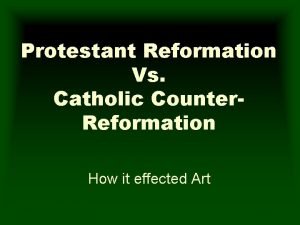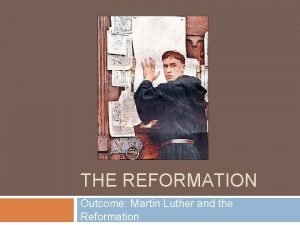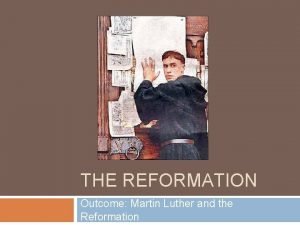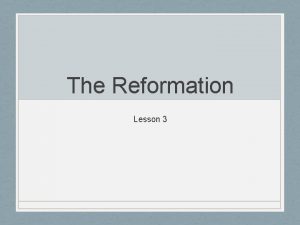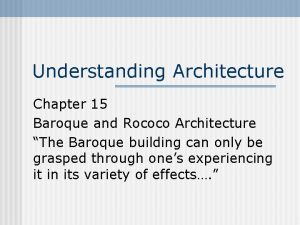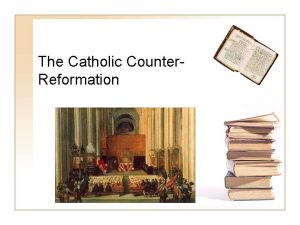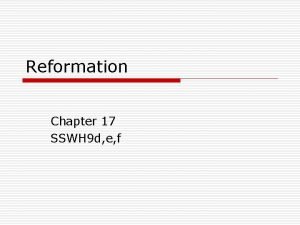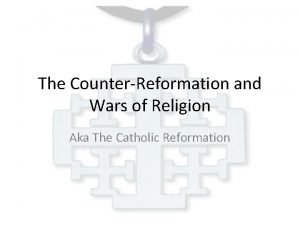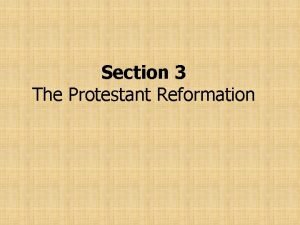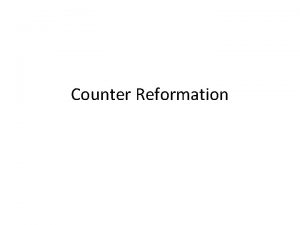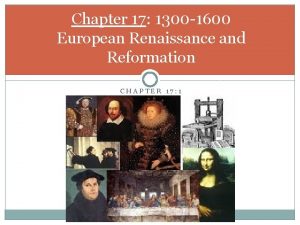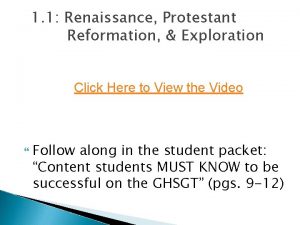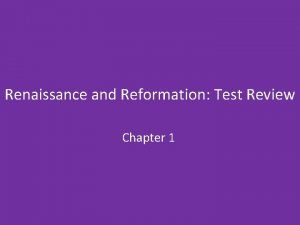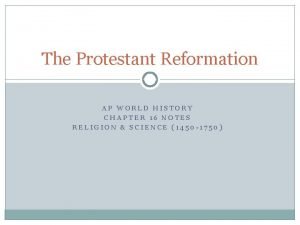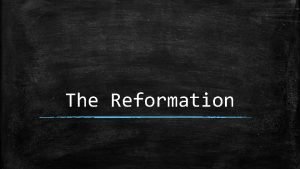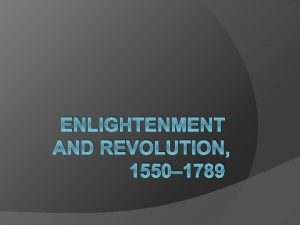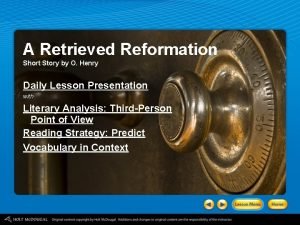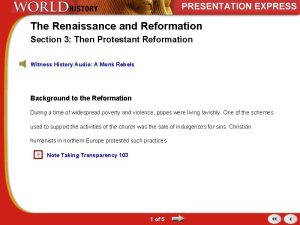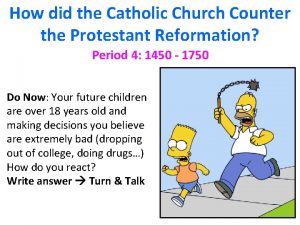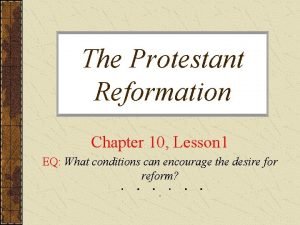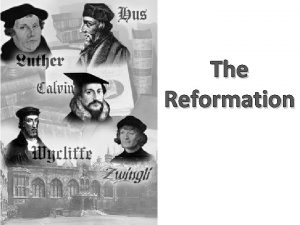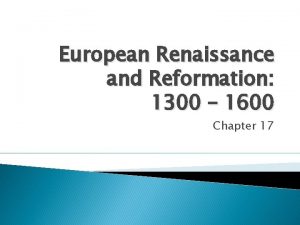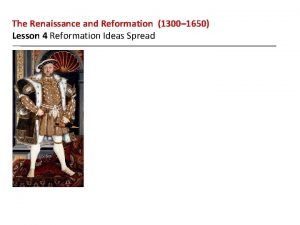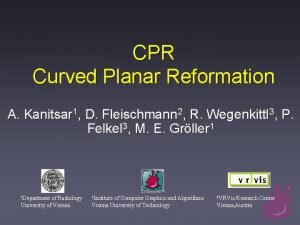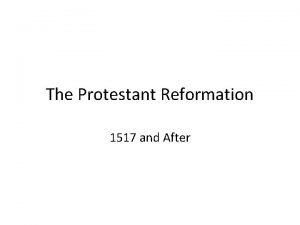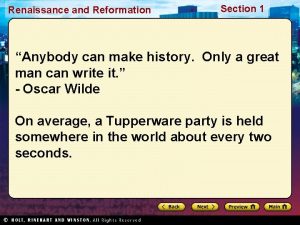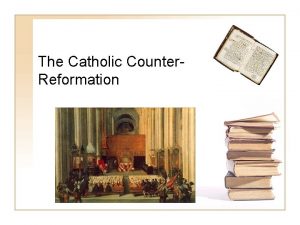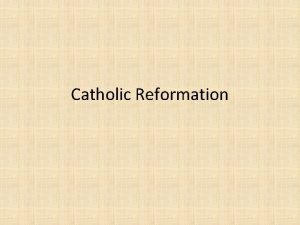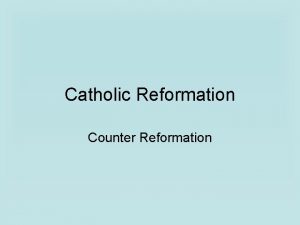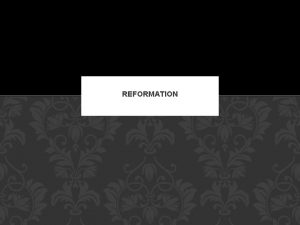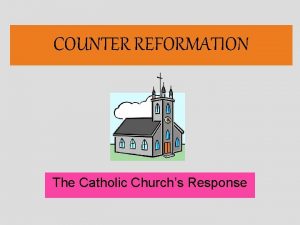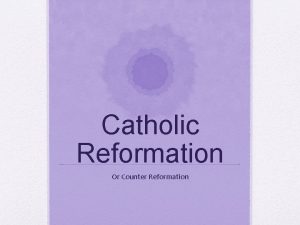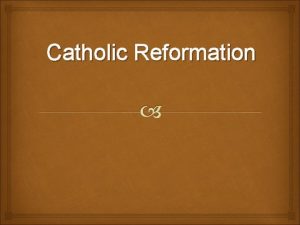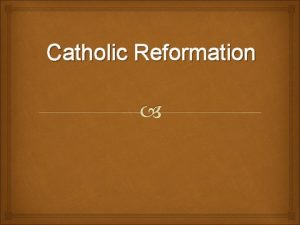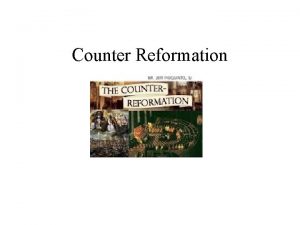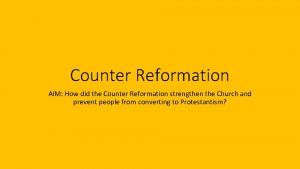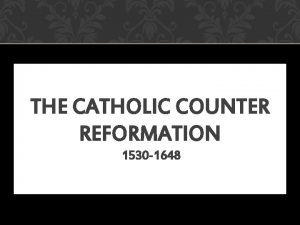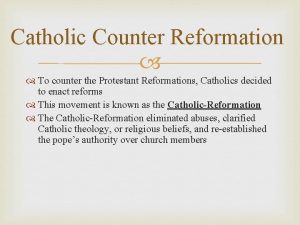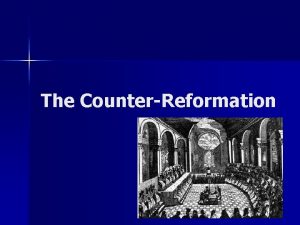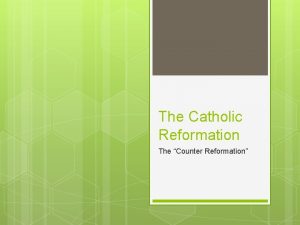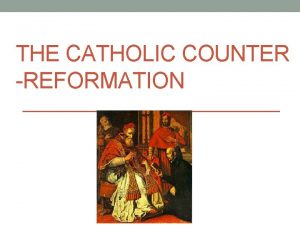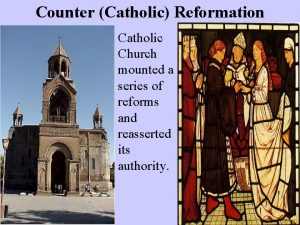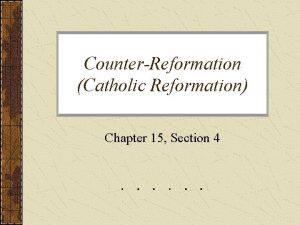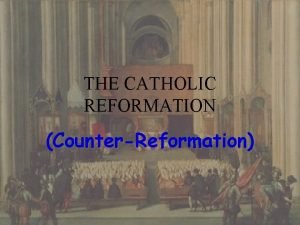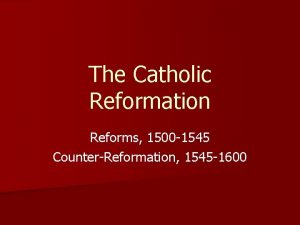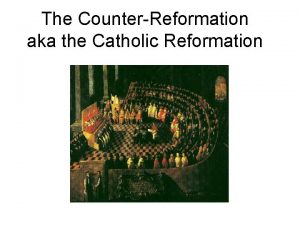The Catholic Counter Reformation The CounterReformation CounterReformation a




























- Slides: 28

The Catholic Counter. Reformation

The Counter-Reformation • • • “Counter-Reformation” a term invented by German Protestant historians. Not much liked by Catholic historians, but now generally accepted and used. Phases in papal reaction to Protestantism: 1. 2. 3. Ignoring the problem (up to mid 1530 s) Defensive (up to 1560 s) Forward-looking, proactive (after 1560 s)

The Counter-Reformation • This was both a response to the gains of Protestantism and the repose to critics within the church that abuses needed to be reformed.

Early 16 th century Popes Leo X and the “Luther affair” Adrian VI (1522 -23), Dutch, starts serious reform efforts but dies after just 13 months Clement VII (1523 -34). Great patron of the arts, learning, the Medici family and Florence. No attempts at reform. “He had no more sense than his uncle Leo X of the urgency and magnitude of what was happening in Germany. ”

Paul III (1534 -49), the first “Counter-Reformation” pope Paul III, an “unlikely reformer, an old-fashioned nepotist who as a cardinal had a mistress who bore him four children. ” Viewed the church “as a fortress to be guarded, defended, and kept on the alert”

Paul III (1534 -49) Reinstates the Roman Inquisition – means that “heretics” will go on trial. Public criticism of the church becomes dangerous Approves the Jesuit order in 1540 (more on this soon) And, importantly, convenes the first session of the Council of Trent in 1545

Catholic Women Angela Merici – Ursuline Order • Foundation for the future of young girls in the church. • Approved as religious community by Pope Paul III in 1544

Council of Trent Three sessions: the first two “defensive, ” the last one, from 1561 -63, the most important. Most attendees are Italian bishops.

Council of Trent and Catholic doctrine • Index of Forbidden books strongly enforced • No compromise with Protestant beliefs – i. e. , “If anyone says that by faith alone the impious is justified, let him be anathema. ” • Tradition and the Bible for authority • All seven sacraments are valid, transubstantiation is right, etc. • Idea instead is to “define Catholic teaching much more sharply than it had been before. ” • Theological works of Thomas Aquinas are key

Council of Trent and Catholic doctrine • Equal validity of Scripture, Church traditions and writings of Church fathers • Monasticism, celibacy of the clergy and purgatory reaffirmed • Church abuses such as simony, and the sale of indulgences curtailed

“Tridentine” reforms • Especially important: for the first time, seminaries are established for priests in every diocese. Every priest must be educated. • Bishops are charged to make regular visitations • Did not touch question of papal reform. • No other council called for 300 years!

Jesuits and the Counter-Reformation • Jesuits often called the “shock troops” of the Counter. Reformation. • Extremely dedicated, welleducated, disciplined set of men focused on revival of Catholicism: “indefatigable preachers, great missionaries, and formidable polemicists. ” • They help reconvert southern Germany and Poland to Catholicism

Loyola and the Society of Jesus • Ignatius Loyola (14911556) • Son of poor Basque nobleman, becomes a soldier until wounded at age 30. • Religious conversion as he recovers. • 1522, becomes pilgrim and then goes to a monastery

Loyola and the Society of Jesus • 1540, Formation of the Society of Jesus • Paul III decides they should be allowed to start a new religious order. • Initial idea: Preachers who are loyal only to the pope • The Jesuit superior general lives in Rome and is elected for life. Much more centralized than the friars, for instance.

The Jesuits • In 1542 oversaw both the Spanish and Italian Inquisitions – Spain: persecution of “Moriscos” (Christian Moors) and Christian Jews who were suspected of backsliding to the original faiths – Italy, Pope Paul IV issued a papal bull accusing Jews of killing Jesus and ordering that Jews be placed in Ghettos in the Papal States – The persecution of Jews throughout Europe increased as a result.

Jesuits and education • Somewhat “accidental, ” not part of the original mission, but quickly becomes very important • Jesuits establish excellent schools across Europe – 144 schools by 1579 – 372 schools by 1615 • Many famous Europeans educated by Jesuits: both Descartes and Voltaire, for instance. • Even Protestants attend.

Jesuits and overseas missions • Jesuits not just in Europe – they go to China, Japan, north and south America, and beyond. • Their letters are often the first European perspectives on other peoples of the globe

Effects? • Inadvertently will spark the Scientific Revolution - create even more formidable challenges to the Catholic Church's authority and very world-view. Specifically, efforts to reform the Julian calendar may have led to the Church's confrontation with Galileo and with the scientific world in general. (historian James Burke) • Wars of Religion • Baroque Art (influence) • Catholic enthusiasm rekindled

Baroque Style of Art & Architecture ► Dramatic, emotional. ► Colors were brighter than bright; darks were darker than dark. ► Counter-Reformation art. ► Paintings & sculptures in church contexts should speak to the illiterate rather than to the well-informed. ► Ecclesiastical art --> appeal to emotions. ► Holland --> Real people portrayed as the

St. Peter’s Basilica, Vatican City by Gialorenzo Bernini

“The Ecstasy of St. Theresa of Avila” by Gianlorenzo Bernini 1647 -52

“The Assumption of the Virgin Mary” Egid Quirim Asam, 1692 -1750

“St. Francis in Ecstasy” Caravaggio, 1595

“The Flagellation of Christ” by Caravaggio

“David and Goliath” by Caravaggio

“Salome with the Head of the Baptist” by Caravaggio

“The Elevation of the Cross” by Peter Paul Reubens 1610 -11

• Was the Counter-Reformation successful? • Was the Protestant Reformation successful? • Which one was more successful?
 Protestant reformation vs catholic reformation
Protestant reformation vs catholic reformation The reformation outcome: martin luther and the reformation
The reformation outcome: martin luther and the reformation The reformation outcome martin luther and the reformation
The reformation outcome martin luther and the reformation The catholic reformation lesson 3
The catholic reformation lesson 3 What were the final decrees of the council of trent
What were the final decrees of the council of trent What was the counter-reformation?
What was the counter-reformation? Was the counter reformation successful?
Was the counter reformation successful? Peace of augsburg def
Peace of augsburg def French wars of religion summary
French wars of religion summary A major goal of the counter reformation was to
A major goal of the counter reformation was to Objective of reformation movement
Objective of reformation movement What was the counter-reformation?
What was the counter-reformation? What was the counter-reformation?
What was the counter-reformation? What was the counter-reformation?
What was the counter-reformation? A thriving trading region where the renaissance began
A thriving trading region where the renaissance began Chapter 16 lesson 2 the spread of protestantism
Chapter 16 lesson 2 the spread of protestantism Protestant reformation kahoot
Protestant reformation kahoot How did the reformation help spur the scientific revolution
How did the reformation help spur the scientific revolution A retrieved reformation point of view
A retrieved reformation point of view The renaissance and reformation section 3 quiz
The renaissance and reformation section 3 quiz Reformation
Reformation Chapter 3 lesson 1 the protestant reformation
Chapter 3 lesson 1 the protestant reformation Corruption in the church during the reformation
Corruption in the church during the reformation Chapter 17 european renaissance and reformation
Chapter 17 european renaissance and reformation Unit 12 lesson 4 reformation ideas spread
Unit 12 lesson 4 reformation ideas spread Curved planar reformation ct
Curved planar reformation ct The reformation continues chapter 17 section 4
The reformation continues chapter 17 section 4 Protestant reformation map
Protestant reformation map Reformation
Reformation
